What Do Ravens Symbolize Spiritually? Mystery, Intelligence!
Ravens are often associated with mystery, intelligence, and transformation in spiritual symbolism. In various cultures, they are seen as messengers of the spirit world, harbingers of change, and carriers of powerful secrets.
Due to their black plumage, ravens are also linked with the void, darkness, and the unknown, making them powerful guides for those navigating through spiritual awakening or personal evolution.
In spirituality, animals often serve as symbols or totems, each with its own set of meanings and messages.
The raven, in particular, carries deep significance:
In Native American culture, for example, the raven is seen as a creator and a trickster, while in Norse mythology, Odin’s two ravens, Huginn (thought) and Muninn (memory), fly around the world to gather information for him.
As spiritual symbols, ravens inspire us to delve into the mysteries of life and to embrace transformation with intelligence and adaptability.
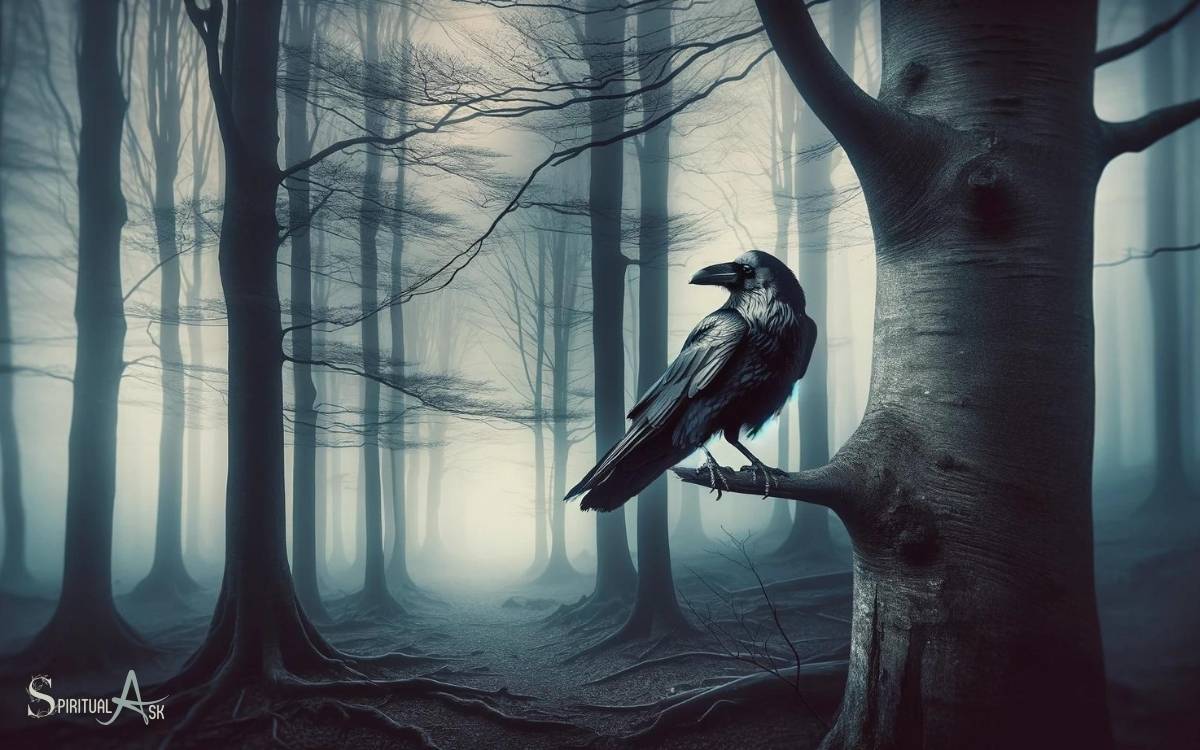
Key Takeaway
Historical and Cultural Significance
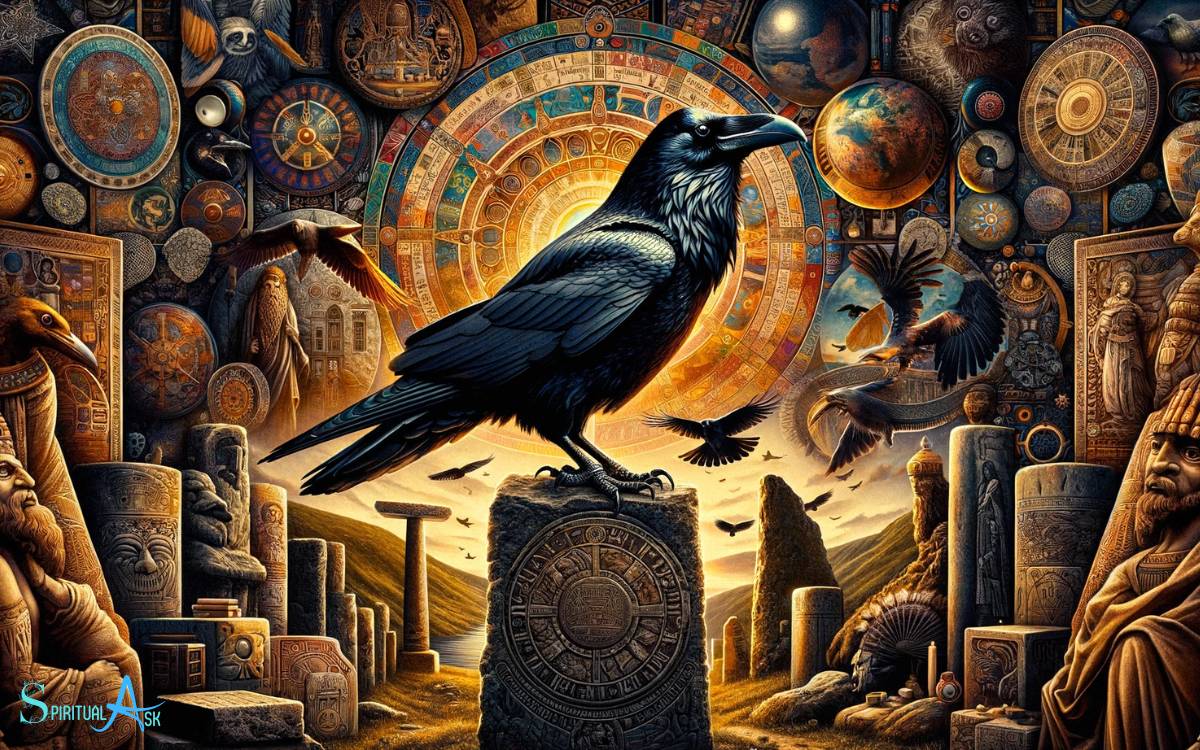
Exploring the historical and cultural significance of ravens reveals their enduring presence in myths, folklore, and religious beliefs. Ravens have been an integral part of various cultures and histories worldwide.
- In Norse mythology, Odin, the chief of the gods, had two ravens, Huginn and Muninn, who served as his eyes and ears, symbolizing thought and memory.
- In Native American folklore, the raven is often portrayed as a trickster figure, bringing both creation and chaos.
- Additionally, in many religious traditions, including Christianity and Islam, ravens are significant symbols of guidance and protection.
Their presence in these diverse cultural narratives underscores the universal intrigue and reverence for these intelligent birds throughout history. The deep-rooted historical and cultural significance of ravens continues to fascinate and inspire people across different societies.
Ravens in Mythology and Folklore
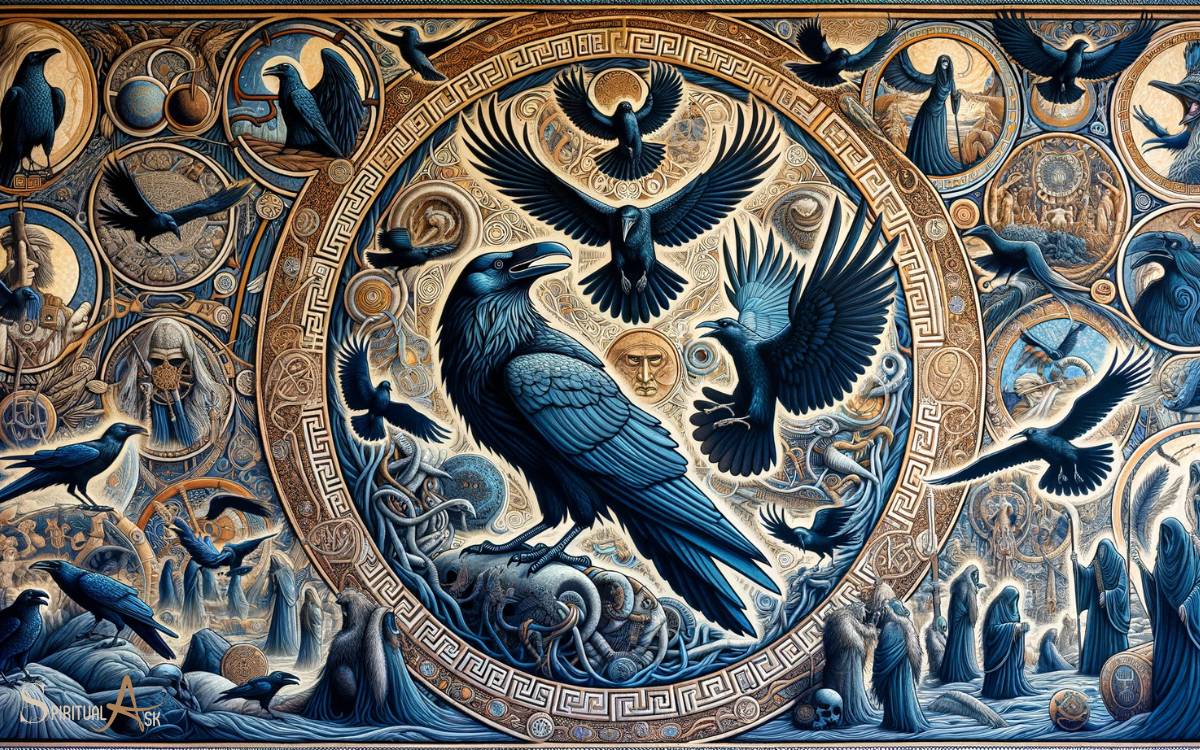
In Norse mythology, ravens played a significant role as the trusted companions of Odin, the chief of the gods. Huginn and Muninn, meaning “thought” and “memory,” were two ravens that flew around the world and brought information to Odin.
They were symbolic of wisdom, knowledge, and the ability to see beyond the obvious. In Celtic folklore, ravens were associated with warfare and were believed to have the ability to predict the outcome of battles.
They were also thought to guide the souls of the dead to the afterlife. In Native American mythology, the raven is often a trickster figure, known for its intelligence and its transformative nature.
Ravens appear in the myths and legends of many cultures, often representing different aspects of life and the human experience, from death and war to wisdom and transformation.
Spiritual Symbolism in Different Belief Systems
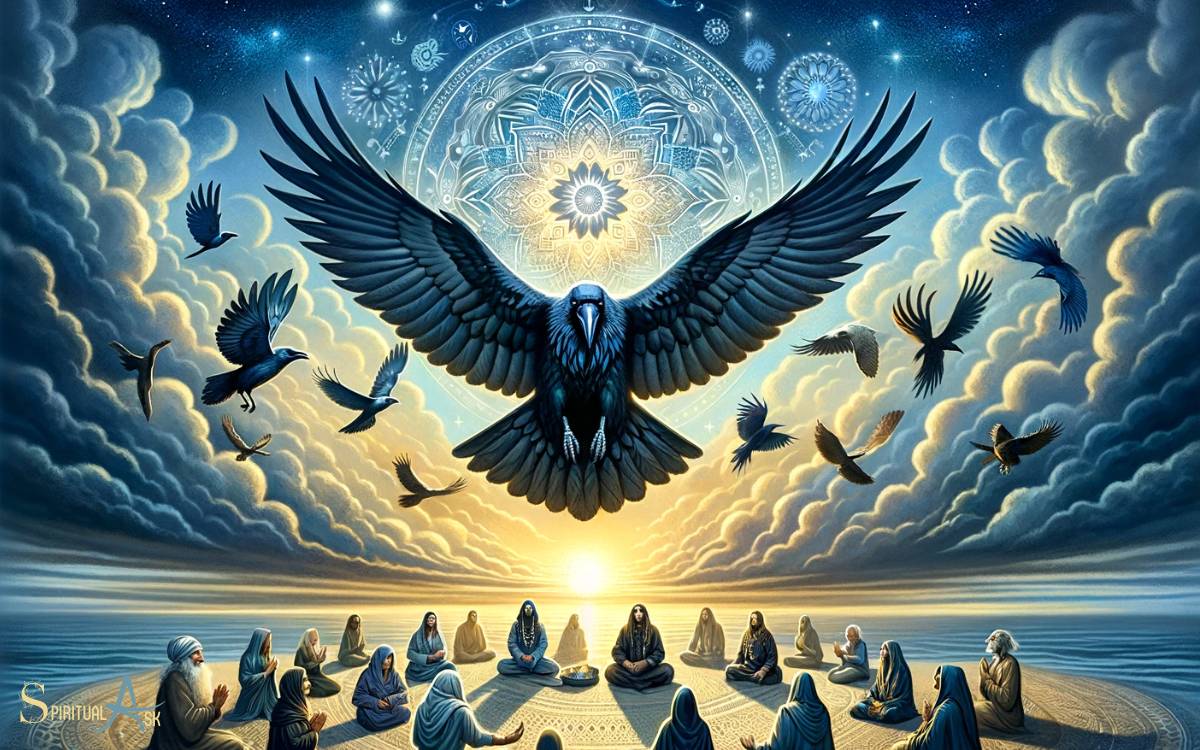
Ravens symbolize spiritual significance differently across various belief systems. In my exploration, I’ve found that: In Norse mythology, ravens were considered to be messengers of the god Odin, a symbol of wisdom and knowledge. In Native American traditions, ravens were seen as tricksters and shape-shifters with the power to heal and bring about change. In contemporary Wiccan and Pagan beliefs, ravens are often associated with magic and the unseen realms. In contrast, what owls symbolize varies widely across cultures and belief systems as well. Some see them as symbols of wisdom and insight, while others view them as omens of death or misfortune. Ultimately, the symbolism of ravens and owls is deeply influenced by individual perspectives and cultural contexts.
- In Norse mythology, ravens are associated with Odin, the god of wisdom, and are seen as creatures of insight and knowledge.
- In Native American cultures, ravens are often considered trickster figures, representing transformation and change.
- In Hinduism, the raven is sometimes associated with the god Shani, who is responsible for the judgment of human actions and the dispensation of justice.
These examples illustrate the diverse ways in which ravens are perceived spiritually in different belief systems. Understanding these varying symbolisms can provide insight into the rich tapestry of human spirituality and the universal themes that connect us across cultures.
The Raven as a Messenger of the Unseen
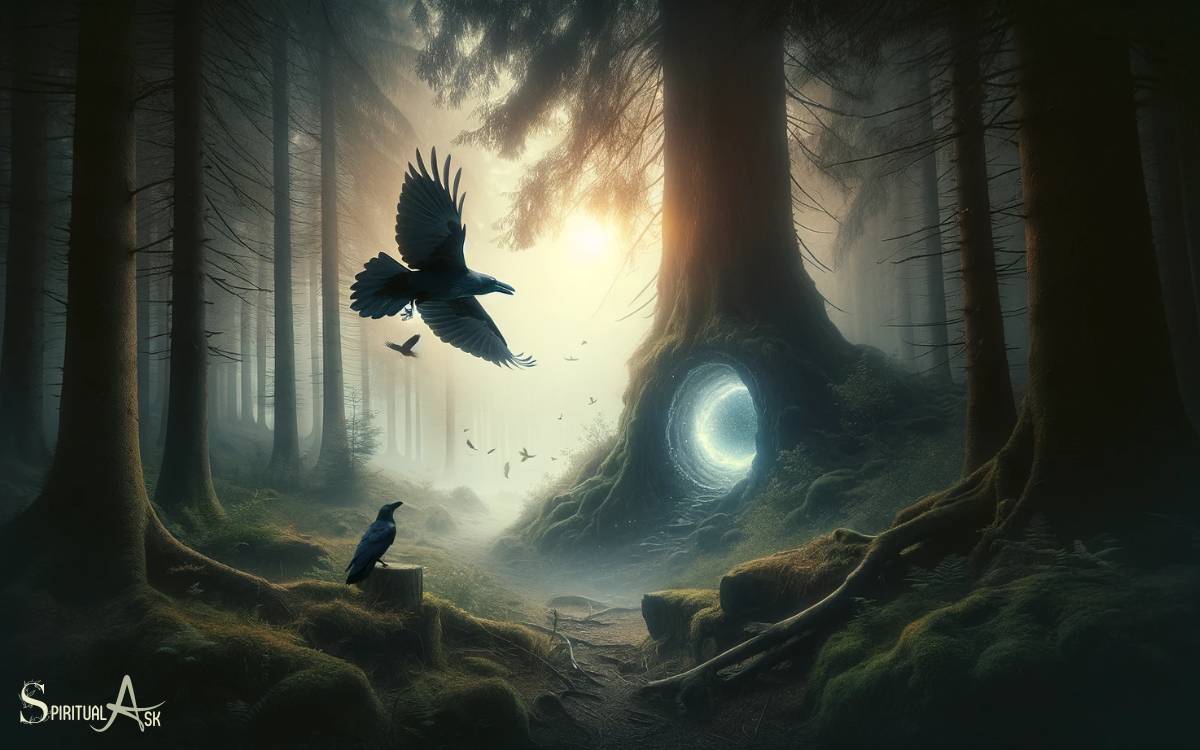
Having delved into the spiritual symbolism of ravens across different belief systems, I now turn to the significance of the raven as a messenger of the unseen.
In many cultures, the raven is viewed as a messenger between the physical and spiritual realms, carrying messages from the unseen world to the living. This role as a messenger is deeply rooted in the spiritual beliefs of various societies.
| Cultural Belief | Significance |
| Norse Mythology | Odin’s companions and bringers of wisdom |
| Native American | Communicators between the spirit world and the living |
| Celtic Mythology | Guiding souls to the afterlife |
The raven’s ability to traverse the boundaries between the seen and unseen makes it a powerful symbol of connection with the spiritual realm. This is particularly significant in understanding its role in shamanism and witchcraft, which we will explore next.
Raven Symbolism in Shamanism and Witchcraft
Continuing from the previous subtopic, as we explore raven symbolism in shamanism and witchcraft, it becomes evident that the raven holds a significant place in the spiritual practices of various cultures.
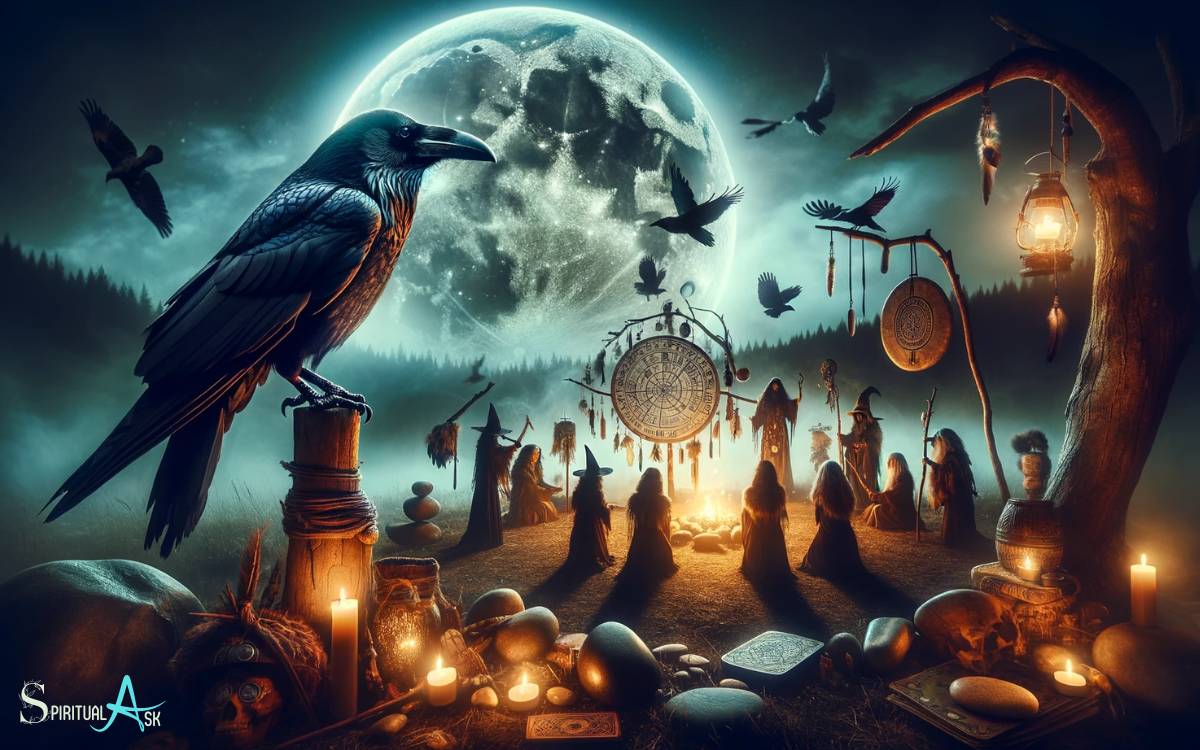
In shamanism and witchcraft, the raven is often seen as a guide between the physical and spiritual realms. It is believed to carry messages from the spirit world to the earthly realm.
Additionally, the raven is associated with transformation and is seen as a symbol of rebirth and renewal, playing a crucial role in rituals aimed at personal growth and spiritual evolution.
Furthermore, in some shamanic traditions, the raven is considered a protector and guardian of sacred knowledge, serving as a wise and mystical ally for practitioners.
Understanding the role of the raven in these spiritual practices enhances our appreciation for its symbolic significance.
As we delve into interpreting raven encounters and omens, it becomes evident that these experiences hold profound meaning in various belief systems.
Interpreting Raven Encounters and Omens
In my exploration of raven symbolism in shamanism and witchcraft, I’ve encountered profound interpretations of raven encounters and omens that hold significant meaning in various belief systems.
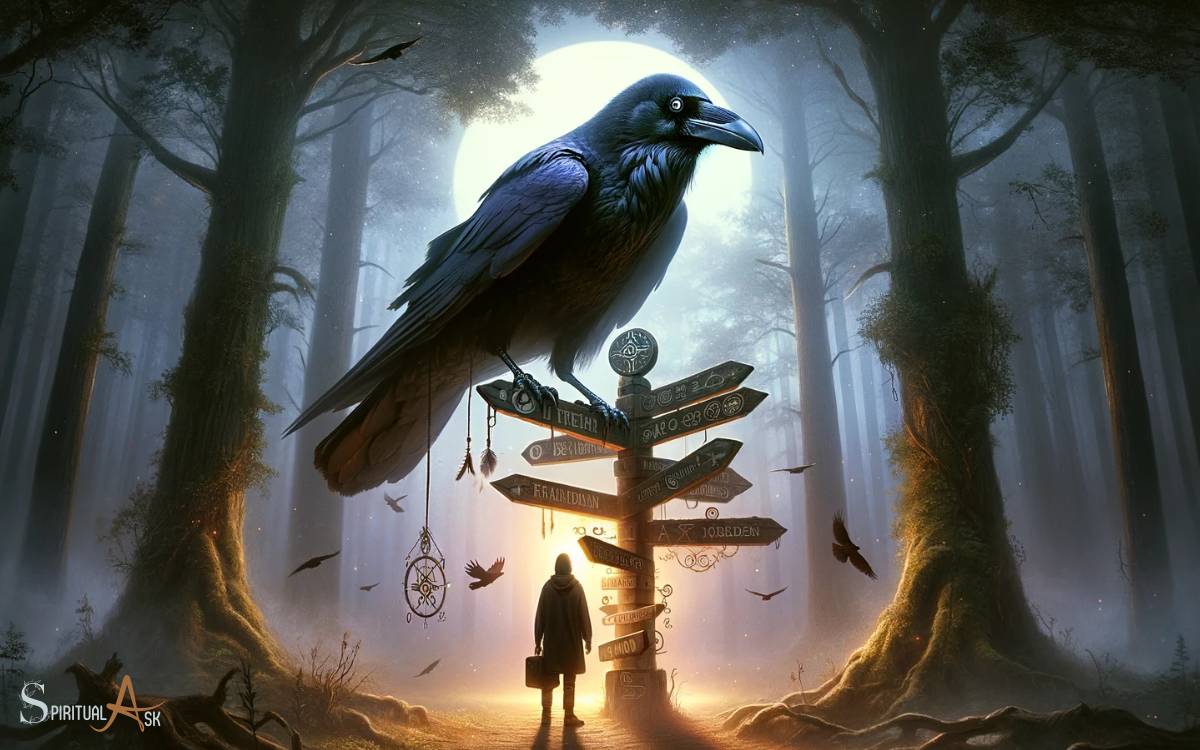
Ravens are often seen as messengers, and encountering them can be a powerful spiritual sign. In shamanic traditions, a raven encounter might be interpreted as a call to pay attention to the subtle energies at play in one’s life.
It could also signify a need for introspection and self-reflection. In witchcraft, the appearance of a raven can be seen as a message from the spiritual realm, urging the individual to trust their intuition and inner wisdom.
Omens related to ravens are often associated with transformation, magic, and the uncovering of hidden truths.
Understanding these interpretations can provide insight and guidance for those attuned to the spiritual significance of raven encounters.
Conclusion
In the tapestry of spiritual symbolism, the raven weaves a dark and mysterious thread, connecting the realms of myth, folklore, and the unseen. As a messenger of the otherworldly, it speaks to our subconscious and stirs the depths of our soul.
Embracing its enigmatic presence invites us to delve into the unknown, unlocking ancient wisdom and hidden truths. The raven beckons us to embrace the shadows and find light within the darkness.






